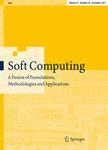版权所有:内蒙古大学图书馆 技术提供:维普资讯• 智图
内蒙古自治区呼和浩特市赛罕区大学西街235号 邮编: 010021

作者机构:Michigan State Univ E Lansing MI 48824 USA
出 版 物:《SOFT COMPUTING》 (Soft Comput.)
年 卷 期:2020年第24卷第21期
页 面:16439-16452页
核心收录:
学科分类:08[工学] 0812[工学-计算机科学与技术(可授工学、理学学位)]
基 金:National Science Foundation [DBI-0939454] Defense Advanced Research Projects Agency (DARPA) Michigan State University
主 题:Metameric representations Evolutionary algorithms Variable-length algorithms
摘 要:Metameric problems are variable-length optimization problems whose representations take on an at least partially segmented structure. This is referred to as a metameric representation. Frequently, each of these segments defines one of a number of analogous components in the solution. Examples include the nodes in a coverage network or turbines in a wind farm. Locating optimal solutions requires, in part, determining the optimal number of components. Evolutionary algorithms can be applied but require modifications to the traditional fixed-length operators. This study proposes a new selection operator for metameric problems: length niching selection. First, the population is partitioned into several niches based on solution length. A window function determines at which lengths a niche is formed. Local selection is then applied within each niche independently, resulting in a new parent population formed by a diverse set of solution lengths. A coverage and a wind farm problem are used to demonstrate the effectiveness of the new operator.